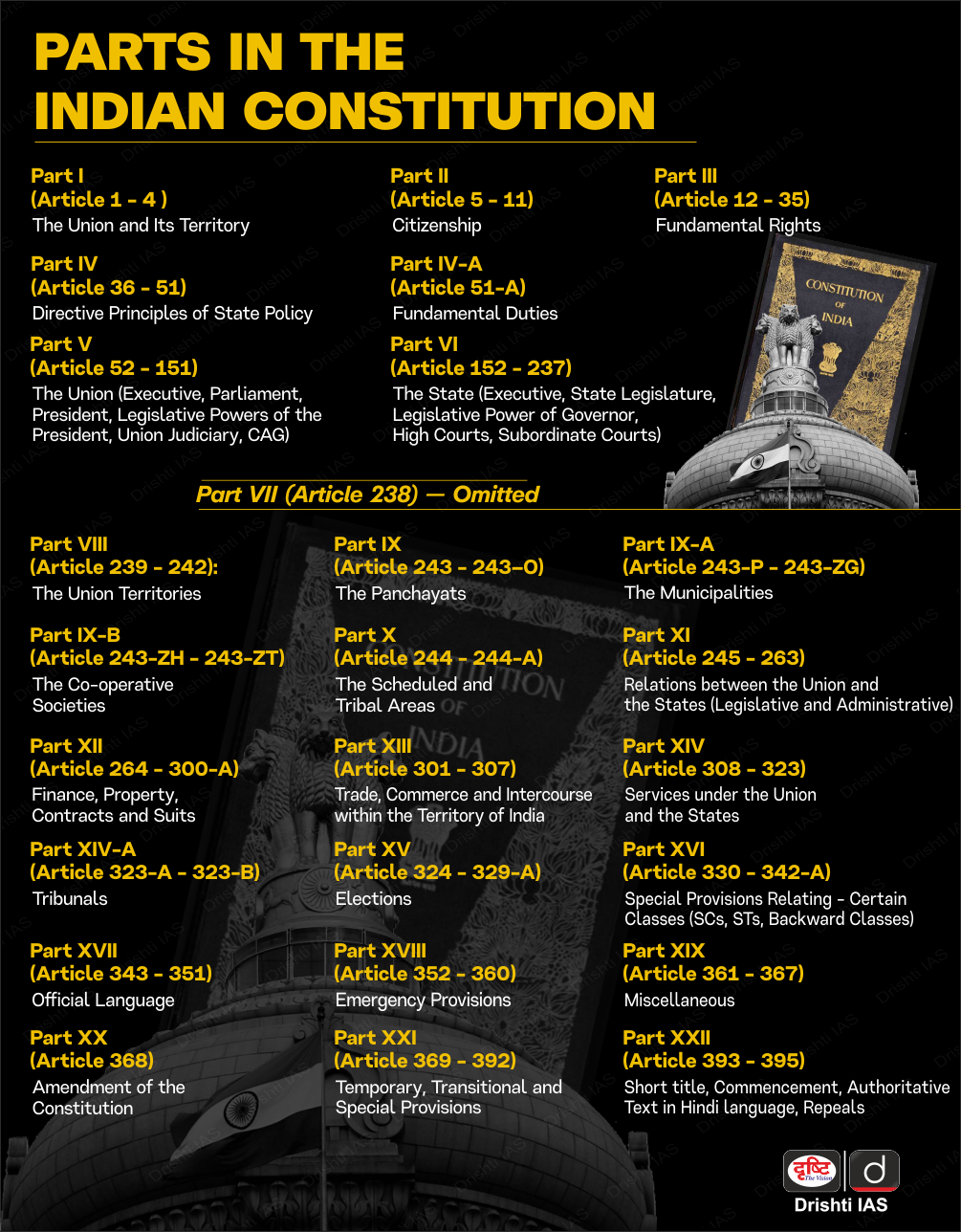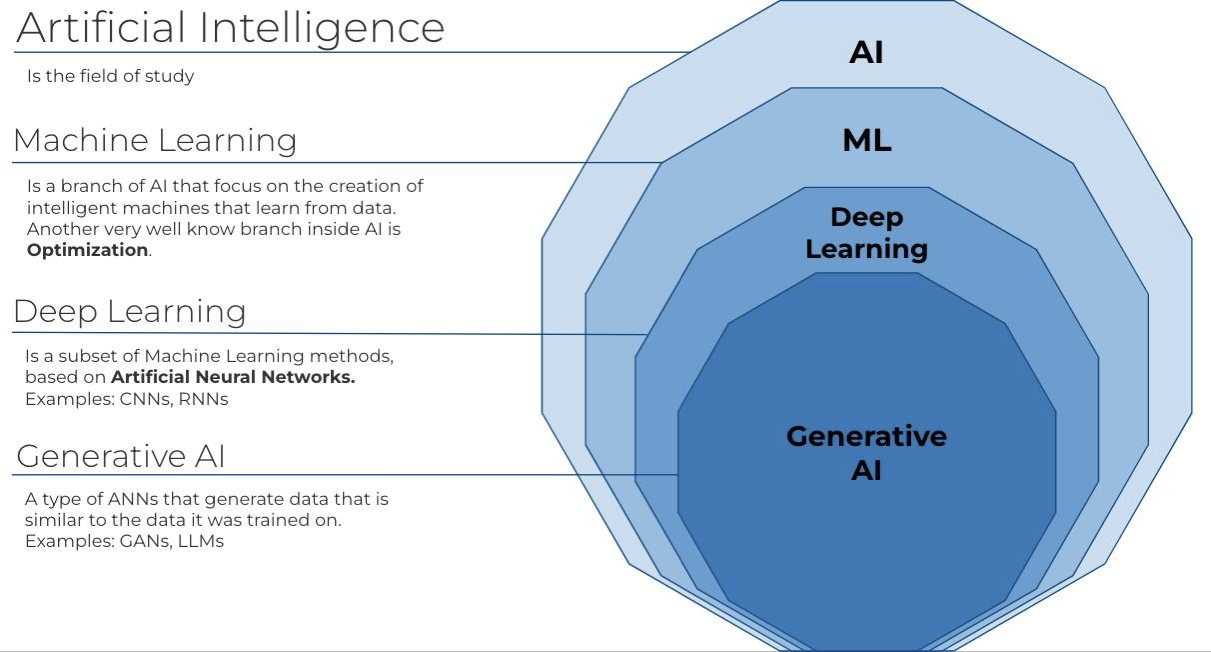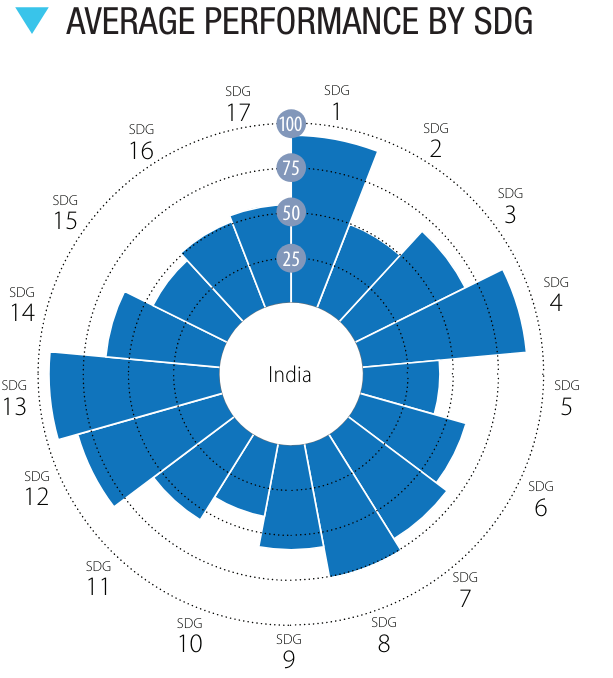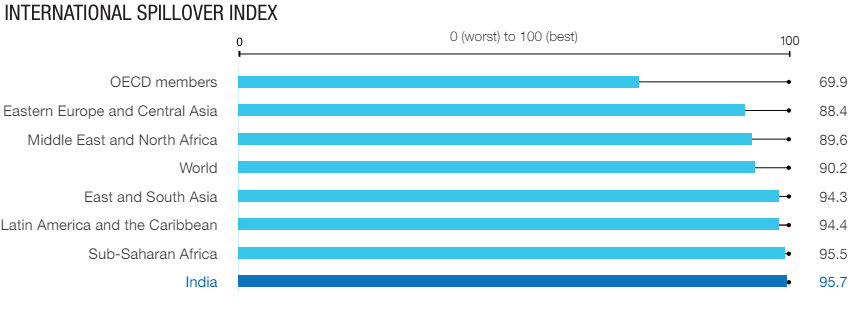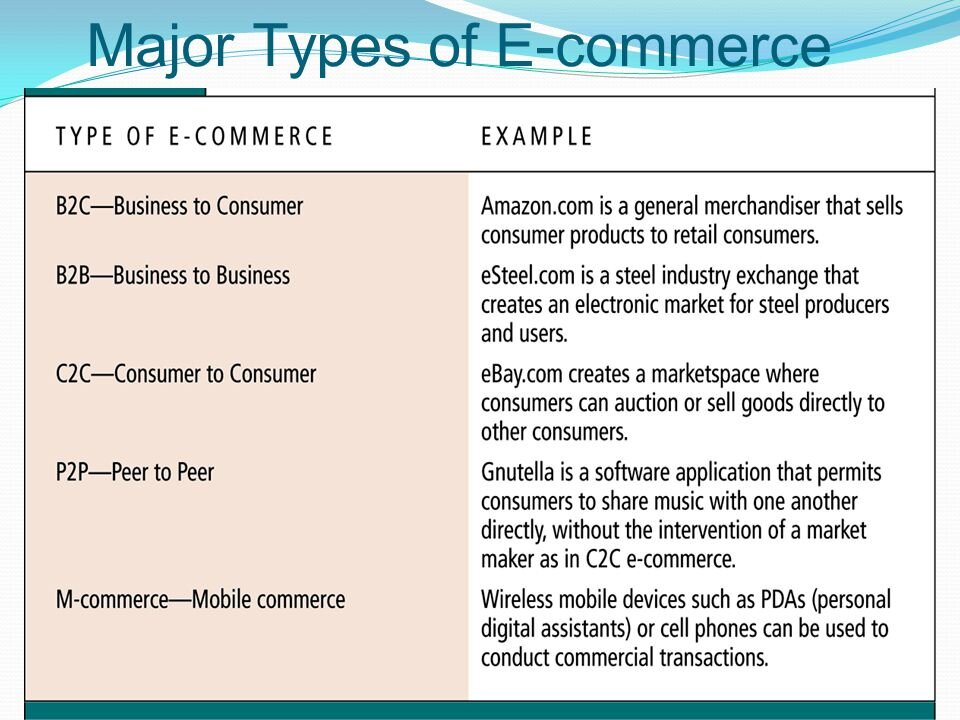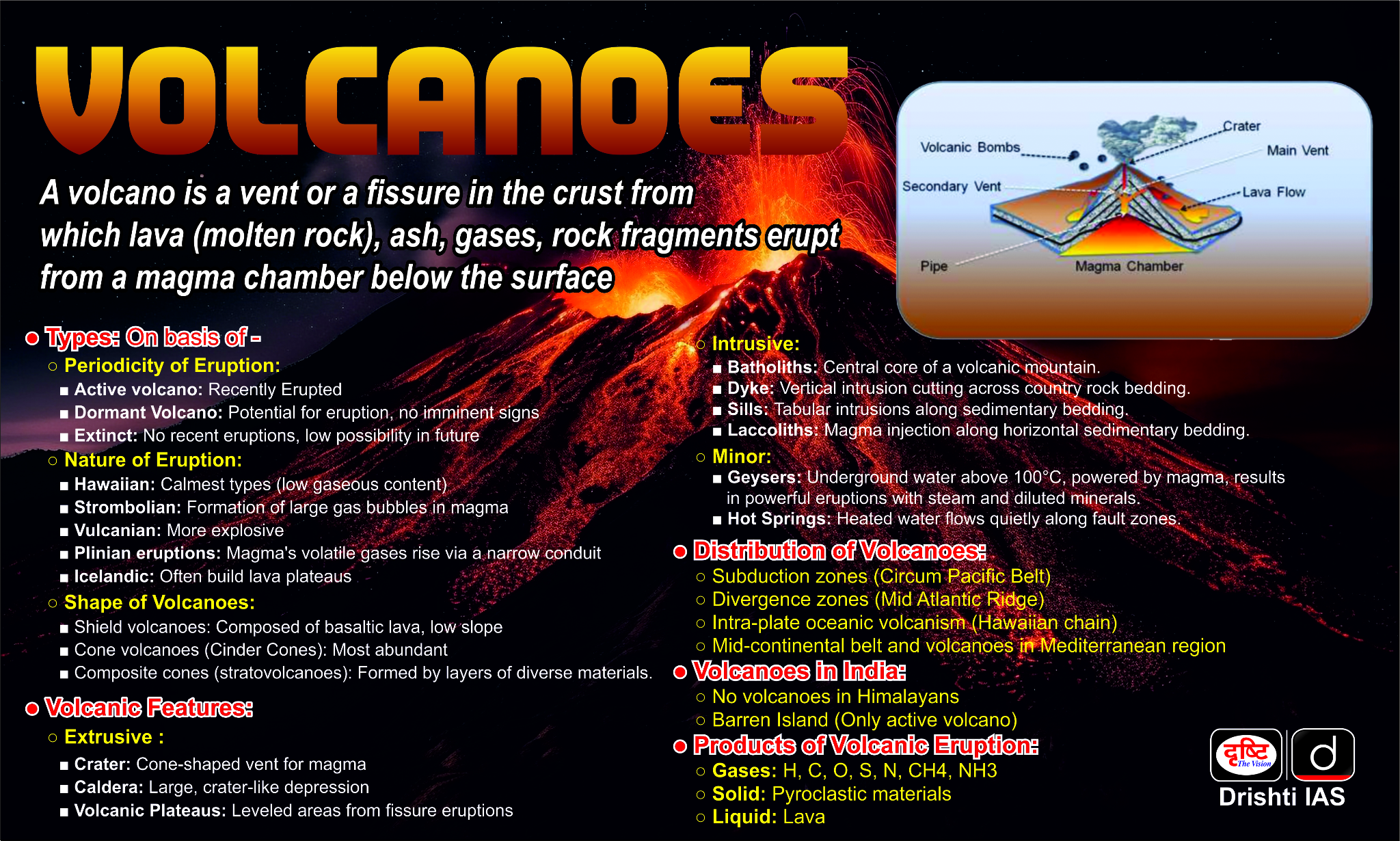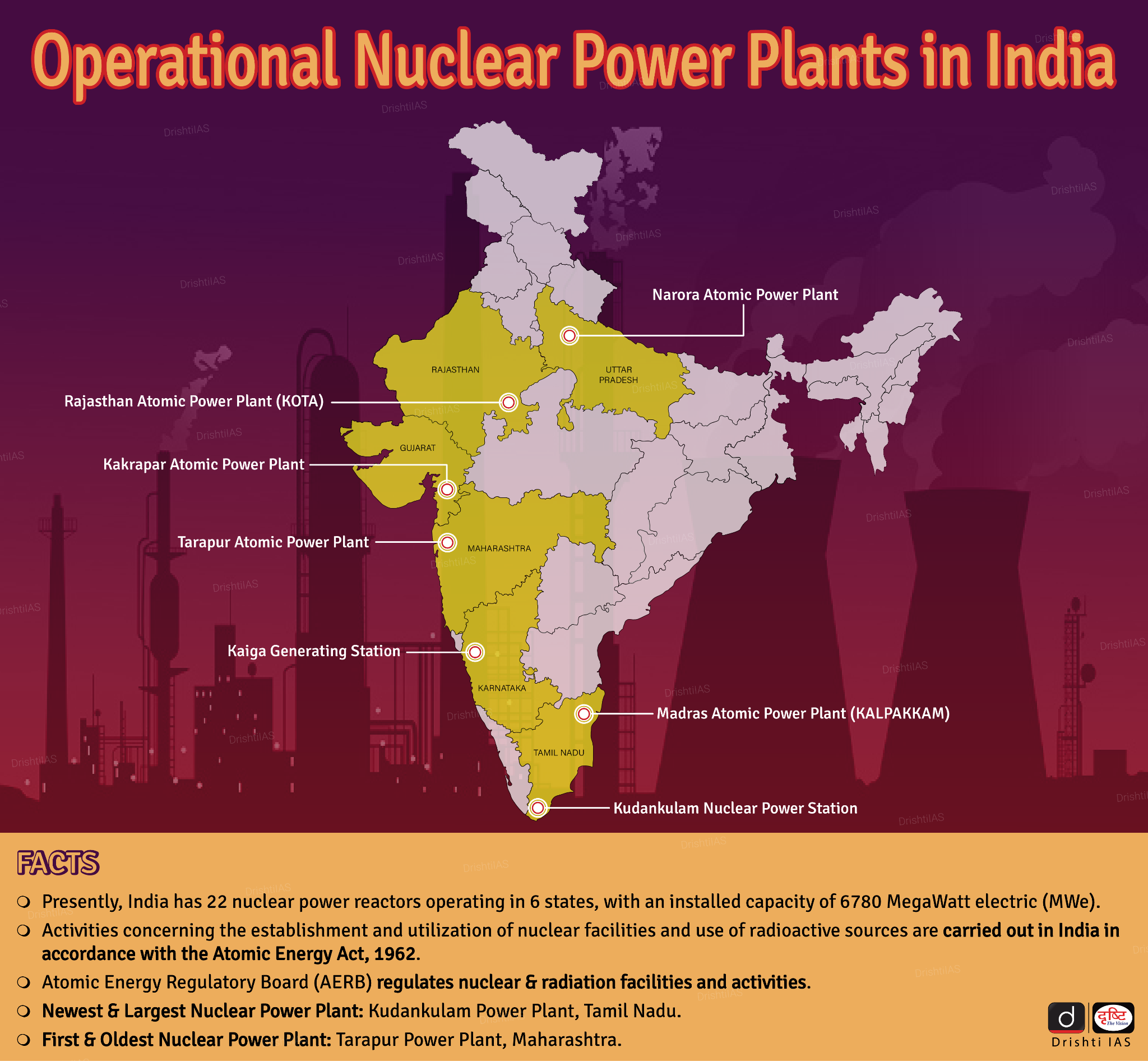Infographics
World History
Holocaust and World War II
For Prelims: World War I, World War II, Decolonisation, Artificial Intelligence
For Mains: Causes and Effects of World War II, Rise of Global Powers, Rise of United Nations, Ethical Usage of AI, Types and Concerns on AI.
Why in News?
- Recently, the United Nations (UN) report has warned that Artificial Intelligence (AI) technology is being used to spread misinformation and hate-driven stories about World War II atrocities.
- It also warns that AI can also unintentionally create untrue or deceptive content related to the Holocaust, which can pose a significant risk of fueling the spread of anti-Semitism (hatred, prejudice for Jewish people).
What was Holocaust Incident?
- About:
- The word ‘holocaust’ comes from the Greek “holokauston”, meaning “an offering consumed by fire”.
- It refers to the systematic state-sponsored persecution and murder of around 6 million European Jews by Adolf Hitler’s Nazi regime.
- It took place between 1941 and 1945, with the planning and early persecution phases beginning as early as 1933 when Adolf Hitler came to power in Germany.
- Reason:
- The Nazis, motivated by antisemitism and a commitment to racial purity, saw Jews as a danger to the Aryan race. They also singled out other groups due to their racial, ideological, and political convictions.
- Historical Context:
- The defeat of Germany in World War I (1914-18) and the subsequent global economic depression of the 1930s created a tumultuous environment in the country which led to the rise of Nazi Party, led by Adolf Hitler.
- Hitler was appointed as the German Chancellor in 1933, and he immediately set out to consolidate his control over the government and the country.
- Once in power, Hitler moved swiftly to suppress all political opposition, curb press freedom, and begin the systematic persecution of various groups deemed undesirable by the Nazi regime.
- The groups targeted for persecution by the Nazis included homosexuals, Romani people, individuals with disabilities, and most notably, the Jewish population.
- Persecution of Jews:
- Jewish constituted less than 1% of Germany’s population but the community was perceived as economically privileged.
- Hitler's ideology blamed Jewish people for Germany’s World War I defeat and the economic hardships of the 1930s.
- A series of laws were enacted to strip Jews of their civil and political rights, and Nazi paramilitaries terrorised Jewish communities.
- The situation escalated dramatically with events like Kristallnacht (the Night of Broken Glass) in 1938, during which Nazi mobs destroyed Jewish-owned businesses, synagogues, and homes, and assaulted and killed numerous Jews.
- As persecution intensified, the outbreak of World War II in 1939 following Germany’s invasion of Poland exacerbated the plight of the Jewish population.
- This invasion marked the beginning of Hitler’s aggressive expansionism aimed at securing “lebensraum” (living space) for the German people.
- The Final Solution:
- The "Final Solution to the Jewish Question” was a systematic and organised effort by Nazis for genocide of millions of Jews to eradicate the Jewish population.
- The Nazis believed that killing the Jews would be more "efficient" than forcing them to migrate.
- The plan began with the increasing ghettoization (isolation) of Jewish people, followed by forced deportations to concentration camps.
- Millions of Jews were sent to concentration camps, where they were forced to do labour and kept in appalling conditions.
- Some of the concentration camps were equipped with sophisticated gas chambers, which were used for the collective murder of Jews and other "undesirable" population groups.
- Auschwitz and the Concentration Camps:
- Concentration camps were places of imprisonment to confine and persecute people deemed undesirable or a threat.
- Auschwitz (in Poland) was the largest Nazi concentration camp.
- It became a symbol of the Holocaust's brutality as over 1.1 million people, mostly Jews, perished there from torture, starvation, disease, and gas chambers.
- Liberated in 1945, the camp now serves as a memorial to the victims.
- International Holocaust Remembrance Day:
- Auschwitz became infamous for the cruelty and inhumane treatment inflicted upon its prisoners by the camp guards, who frequently subjected them to torture and abuse out of sheer malice and sadistic pleasure.
- The liberating of the camp by the Red Army (armed forces of the Soviet Union) on 27th January 1945 brought an end to its horrific operations, a date that is now observed globally as International Holocaust Remembrance Day to honour the memory of the victims.
What was World War II?
- About:
- World War II (1939-1945) is one of the most significant and devastating conflicts in human history.
- It was fought between the Axis powers (Germany, Italy, and Japan) and Allied powers (France, Great Britain, the United States, the Soviet Union, and, to a lesser extent, China).
- Nearly some 100 million people had been militarised, and 50 million had been killed (around 3% of the world's population).
Note
- World War I (1914-18) was fought between Allied Power (France, Russia and Britain) and Axis (Central) Power (Germany, Austria-Hungary, the Ottoman Empire, and Bulgaria) in which Allied Powers won
- Causes of War:
- The Treaty of Versailles: After World War I, the victorious Allied Powers forced Germany to sign the Treaty of Versailles, which made Germany accept guilt for the war, pay reparations, lose territory, and prohibited them from having a large military.
- This humiliation paved the way for the spread of Ultra-Nationalism and Nazi regime under Adolf Hitler in Germany.
- Failure of League of Nations: The League of Nations, established in 1919 to maintain global peace, ultimately failed due to not all countries joining and lacking an army to prevent military aggression.
- Examples include League's inability to intervene in conflicts, such as the Italian invasion of Ethiopia and the Japanese invasion of Manchuria, undermining its credibility and effectiveness.
- The Great Depression: The global economic depression of the 1930s exacerbated political and social instability in many countries, contributing to the rise of extremist movements.
- The economic difficulties faced by countries like Germany and Japan led them to pursue aggressive expansionist policies to secure resources and markets.
- The Rise of Totalitarian Regimes: The establishment of authoritarian and totalitarian regimes, such as Nazi Germany, Fascist Italy, and Imperial Japan, with their expansionist and militaristic ideologies, was a major factor in the outbreak of the war.
- These regimes sought to expand their power and influence, often through the use of military force.
- The German Invasion of Poland (1939): The invasion was a violation of the Munich Agreement and was the immediate trigger for the outbreak of World War II.
- This invasion prompted declarations of war from France and the United Kingdom against Germany, marking the beginning of the war in Europe.
- The Japanese Expansion in Asia: The Empire of Japan's aggression in Asia, including the invasion of China and the attack on Pearl Harbor in 1941, brought the United States into the conflict.
- Japan's expansionist policies and desire to control resources and territories in the Pacific region contributed to the outbreak of the war in the Pacific.
- The Treaty of Versailles: After World War I, the victorious Allied Powers forced Germany to sign the Treaty of Versailles, which made Germany accept guilt for the war, pay reparations, lose territory, and prohibited them from having a large military.
- The End of the War and its Aftermath:
- End of War: The war in Europe ended with the surrender of Germany on 8th May 1945, following the capture of Berlin and the suicide of Adolf Hitler.
- The war in the Pacific concluded with the atomic bombings of Hiroshima and Nagasaki, leading to Japan's surrender on 15th August 1945.
- New Superpowers: World War II brought about changes in the status of countries and continents. Britain and France lost their positions of preeminence as superpowers and yielded place to the USA and the USSR.
- Start of Decolonisation: After World War II, Britain and France faced significant domestic and international challenges that weakened their control over their vast colonial empires, which led to decolonisation in Africa and Asia and redrawing of boundaries to establish sovereign nation-states.
- End of War: The war in Europe ended with the surrender of Germany on 8th May 1945, following the capture of Berlin and the suicide of Adolf Hitler.
Artificial Intelligence
- Artificial intelligence, or AI, is technology that enables computers and machines to simulate human intelligence and problem-solving capabilities.
- It is the ability of a computer, or a robot controlled by a computer to do tasks that are usually done by humans because they require human intelligence and discernment.
- Characteristics & Components:
- The ideal characteristic of artificial intelligence is its ability to rationalize and take actions that have the best chance of achieving a specific goal. A subset of AI is Machine Learning (ML).
- Deep Learning (DL) techniques enable this automatic learning through the absorption of huge amounts of unstructured data such as text, images, or video.
|
Drishti Mains Question: Q.1 Critically evaluate the role of the ideological factors, particularly the rise of fascism and Nazism, in leading to World War II. How did the failure of appeasement contribute to the outbreak of the war? Q.2 Analyze the differences between Nazism and Fascism. Q.4 To what extent can the policy of 'appeasement' be blamed for the outbreak of the Second World War? |
UPSC Civil Services Examination, Previous Year Questions (PYQs)
Q. With the present state of development, Artificial Intelligence can effectively do which of the following? (2020)
- Bring down electricity consumption in industrial units
- Create meaningful short stories and songs
- Disease diagnosis
- Text-to-Speech Conversion
- Wireless transmission of electrical energy
Select the correct answer using the code given below:
(a) 1, 2, 3 and 5 only
(b) 1, 3 and 4 only
(c) 2, 4 and 5 only
(d) 1, 2, 3, 4 and 5
Ans: (b)
Important Facts For Prelims
National Monetisation Pipeline
Why in News?
Recently, according to a statement by NITI Aayog, assets worth Rs 3.85 lakh crore have been monetised by the government under the National Monetisation Pipeline during the first three years of the financial period spanning from 2021-22 to 2024-25.
- The NITI Aayog is entrusted with the mandate to develop the National Monetisation Pipeline.
What is the National Monetisation Pipeline (NMP)?
- About:
- The NMP envisages an aggregate monetisation potential of Rs 6 lakh crore through the leasing of core assets of the Central government in sectors such as roads, railways, power, oil and gas pipelines, telecom, civil aviation etc, over a four-year period (FY 2021-22 to 2024-25).
- The Monetization through NMP only includes core assets, excluding monetization through disinvestment of non-core assets.
- Currently, only assets of central government line ministries and CPSEs in infrastructure sectors have been included.
- To streamline the process, the monetization of non-core assets, including land, real estate, and infrastructure, is being transferred from the Department of Investment and Public Asset Management (DIPAM) to the Department of Public Enterprises (DPE) within the Ministry of Finance.
- This pipeline is intended to support investments under the National Infrastructure Pipeline (NIP) worth Rs 111 lakh crore in six years through FY25.
- The timeline for the NMP has been strategically set to be co-terminus with the remaining period under the National Infrastructure Pipeline (NIP).
- Status of NMP:
- The total target for the first two years i.e. 2021-22 and 2022-23 under NMP was around Rs. 2.5 lakh crore, against which around Rs. 2.30 lakh crore was achieved.
- During the financial year 2023-24, against the target of Rs. 1.8 lakh crore, which is the highest among all the four years, the achievement has been around Rs. 1.56 lakh crore.
- Further, this achievement in 2023-24 is around 159% of the achievement in 2021-22.
- All the ministries achieved 70% of their monetisation targets with the Ministry of Road Transport and Highways and the Ministry of Coal being the top two achievers with a total achievement of Rs. 97,000 crore in 2023-24.
- Need for NMP:
- Overcapitalisation: The optimum input-output ratio is seldom observed in a majority of government infrastructure projects leading to their overcapitalisation.
- Resource Optimization: The NMP aims to improve resource use by bringing market-driven methods to better match resources with project needs, reducing delays and cost increases.
- Coordination Challenges: The NMP promotes teamwork across government departments and with private firms to improve how infrastructure projects are carried out.
- Boost Economy: NMP connects with PM Gati Shakti, which aims to develop India's infrastructure comprehensively, while NMP seeks to raise funds for new projects by leveraging existing assets.
- Utilising Underutilised Public Assets: The NMP aims to sell unproductive government assets to raise money for new infrastructure and expand green projects.
UPSC Civil Services Examination, Previous Year Question (PYQ)
Prelims:
Q. In India, the term “Public Key Infrastructure” is used in the context of (2020)
(a) Digital security infrastructure
(b) Food security infrastructure
(c) Health care and education infrastructure
(d) Telecommunication and transportation Infrastructure
Ans: (a)
Mains:
Q.1 Account for the failure of manufacturing sector in achieving the goal of labour-intensive exports. Suggest measures for more labour-intensive rather than capital-intensive exports. (2017)
Q.2 The nature of economic growth in India in recent times is often described as a jobless growth. Do you agree with this view? Give arguments in favour of your answer. (2015)


Biodiversity & Environment
UN Sustainable Development Report 2024
For Prelims: United Nations, Sustainable Development Goals, Least developed countries, OECD, Climate Finance
For Mains: Progress of India in Achieving SDGs, Measures to Boost SDG Financing.
Why in News?
Recently, the 9th edition of the Sustainable Development Report released by UN Sustainable Development Solutions Network (SDSN) has highlighted that the world is significantly behind schedule in achieving the Sustainable Development Goals (SDGs) set by the United Nations in 2015.
UN Sustainable Development Solutions Network (SDSN)
- It is a global network established in 2012 by the United Nations (UN).
- It aims to promote practical solutions for achieving the Sustainable Development Goals (SDGs) at national and international levels.
- It focuses on mobilising expertise by connecting universities, research institutions, and national laboratories to identify and develop solutions for tackling critical sustainability challenges.
- The Secretariat of the SDSN is located in Paris, France; Kuala Lumpur, Malaysia and New York, US.
What are the Key Findings of the Sustainable Development Report 2024?
- Global SDG Progress:
- Only 16% of SDG targets are on track to be achieved by 2030, with 84% showing limited or reversed progress.
- Since 2020, global SDG progress has stagnated, particularly for SDGs 2 (Zero Hunger), 11 (Sustainable Cities), 14 (Life Below Water), 15 (Life on Land), and 16 (Peace, Justice, and Strong Institutions).
- Significant reversals in progress is observed in obesity rates (SDG 2), press freedom (SDG 16), red list index (SDG 15), sustainable nitrogen management (SDG 2), and life expectancy at birth (SDG 3), influenced by Covid-19 and other factors.
- Progress towards SDG9 (Industry, Innovation, and Infrastructure), is showing slightly positive trends.
- Food and Land Systems:
- SDG targets related to food and land systems are off-track.
- It reported that globally 600 million people will still suffer from hunger by 2030 combined with increasing obesity globally.
- Greenhouse gas emissions from Agriculture, Forestry, and Other Land Use (AFOLU) represent almost a quarter of annual global GHG emissions.
- Regional and Country Group Variations:
- Nordic countries lead in SDG achievement, with Finland (score 86.4) ranked first, followed by Sweden (85.7), Denmark (85.0), Germany (83.4), and France.
- BRICS and BRICS+ countries (Egypt, Ethiopia, Iran, Saudi Arabia, UAE) have shown faster-than-average SDG progress since 2015.
- Bottom 3 Countries: South Sudan, Central African Republic and Chad.
- East and South Asia are the regions with the most SDG progress since 2015.
- Investment Challenges:
- According to the World Bank, about 10% of the world's population lives in extreme poverty, surviving on less than USD 1.90 a day.
- It also reports that only 43% of adults in low-income countries (LICs) have access to formal financial services, limiting their ability to invest and save for the future.
- The International Monetary Fund (IMF) estimates that LICs face an annual gap of USD 290 billion in funding for their SDGs.
- The Global Education Monitoring Report by UNESCO states that around 262 million children and youth are out of school, with more than half of them in sub-Saharan Africa and Southern Asia.
- The International Labour Organization (ILO) highlights that around 152 million children are involved in child labour, depriving them of education and proper development opportunities.
- According to the World Bank, about 10% of the world's population lives in extreme poverty, surviving on less than USD 1.90 a day.
- Global Cooperation:
- The report has introduced a new Index on countries' support to UN-based multilateralism (UN-Mi) ranks countries based on their engagement with the UN system.
- Barbados has topped the Un-Mi index followed by Antigua and Barbuda, Uruguay, Mauritius, and the Maldives.
- Bottom 5 countries include the United States, Somalia, South Sudan, Israel, and the Democratic Republic of Korea..
- This index takes into account factors such as treaty ratification, votes at the UNGA, membership in UN organizations, participation in conflicts and militarisation, use of unilateral sanctions, and financial contributions to the UN.
What is the Performance of India in SDG Index?
- Ranking: India secured 109th rank with the overall score of 64.0.
- Status of SDG Targets: Only around 30% of SDG targets are on track or have been achieved.
- There is limited progress in the other 40% of the targets and in around 30% of targets the situation is worsening.
- Average Performance of SDGs: Highest performance is observed in achieving SDG 1, SDG 4, SDG 12 and SDG 13.
- SDG Dashboard and Trends:
- International Spillover Index: This index is a metric used to assess how a country's actions impact the ability of other countries to achieve the SDGs.
- It measures the international ripple effects of a country's policies and practices.
- It considers three main dimensions of these effects.
- Environmental & social impacts embodied in trade (e.g., pollution caused by production for export).
- Economic & financial spillovers (e.g., financial crises spreading across borders).
- Security spillovers (e.g., instability in one country impacting the safety of others).
- Statistical Performance Index: India scored 74.5 in this index.
- It measures the strength of a country's national statistical system. A higher score indicates a country has a more reliable and comprehensive statistical system, which is crucial for effectively tracking progress towards the SDGs.
What are the Key Recommendations of the Report?
- Strengthen Global Cooperation and Multilateralism: The report recommends nations to collaborate by sharing resources, preventing duplication of efforts, and developing fair solutions for global issues.
- Revitalised international institutions, clear goals, tracking systems, and engagement from all stakeholders are crucial.
- Examples such as the Paris Agreement and the Montreal Protocol illustrate the power of collaboration.
- Addressing Financing Gaps for Sustainable Development: The report recommends setting up new institutional frameworks to facilitate and channel financing towards sustainable development initiatives.
- It proposes the implementation of innovative global taxation mechanisms to generate additional resources for sustainable development.
- The report calls for a shift in investment priorities towards funding public goods, such as quality education (SDG 4), as a crucial component of sustainable development.
- It emphasises the need to improve the availability and accessibility of affordable long-term capital, particularly for low and middle-income countries.
- "FABLE" Pathways: Innovative solutions, such as the "FABLE" (Food, Agriculture, Biodiversity, Land-Use, and Energy) pathways should be implemented to address the challenges in the food and land systems.
- Reducing overconsumption and limiting the intake of animal-based protein emphasising the need to respect cultural preferences and dietary habits.
- Targeted investments to enhance agricultural productivity, particularly in high-demand areas.
- Establishment of inclusive and transparent monitoring systems involving various stakeholders and local communities to curb deforestation.
|
Drishti Mains Question: Discuss India's progress towards achieving Sustainable Development Goals (SDGs) and analyse the key challenges hindering its path. How can India further accelerate its efforts to meet the SDGs by 2030? |
UPSC Civil Services Examination Previous Year Question (PYQ)
Prelims
Q. Consider the following statements: (2016)
- The Sustainable Development Goals were first proposed in 1972 by a global think tank called the ‘Club of Rome’.
- The Sustainable Development Goals have to be achieved by 2030.
- Which of the statements given above is/are correct?
(a) 1 only
(b) 2 only
(c) Both 1 and 2
(d) Neither 1 nor 2
Ans: (b)
Q. Sustainable development is described as the development that meets the needs of the present without compromising the ability of future generations to meet their own needs. In this perspective, inherently the concept of sustainable development is intertwined with which of the following concepts? (2010)
(a) Social justice and empowerment
(b) Inclusive Growth
(c) Globalization
(d) Carrying capacity
Ans: (d)
Mains
Q. Access to affordable, reliable, sustainable and modern energy is the sine qua non to achieve Sustainable Development Goals (SDGs).” Comment on the progress made in India in this regard. (2018)
Q. National Education Policy 2020 is in conformity with the Sustainable Development Goal-4 (2030). It intends to restructure and reorient the education system in India. Critically examine the statement. (2020)

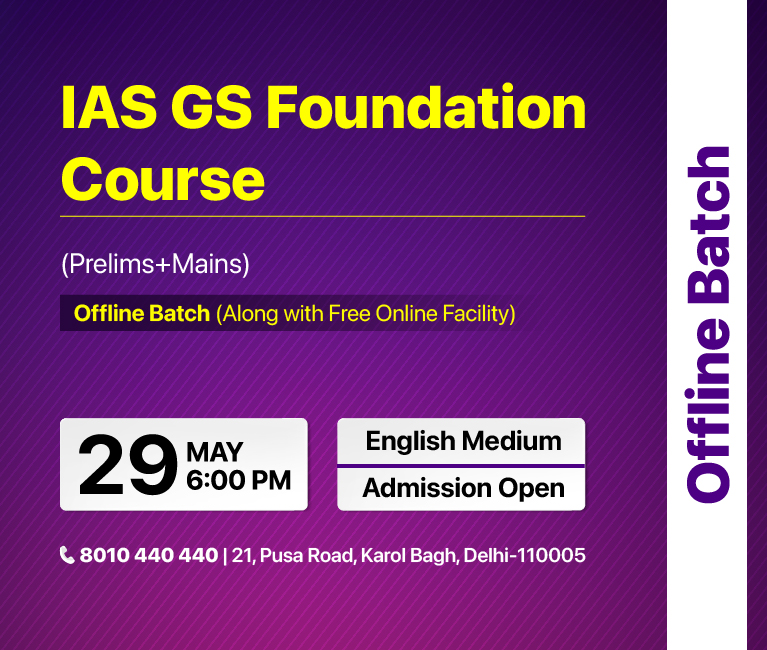
Indian Economy
E-commerce As Export Hub
For Prelims: Merchandise exports, Government e-marketplace (GeM) , e-Commerce, Foreign Direct Investment, Consumer Protection, Data Privacy, Intellectual Property, The Information Technology Act, Information Technology (Intermediary Guidelines and Digital Media Ethics Code) Rules 2021, Consumer Protection (E-Commerce) Rules 2020, Foreign Direct Investment Policy
For Mains: Significance E-Commerce export policy.
Why in News?
Recently, the commerce ministry's 100-day agenda roadmap for the new government includes plans to harness E-Commerce for export. India set a target to achieve USD 1 trillion in merchandise exports by 2030, identifying cross-border e-commerce as a key strategy to achieve this goal.
What are the 100-day agenda in E-Commerce?
- 100-day Agenda: This is the programme to developing e-commerce hubs to support online exports is a key focus of the government’s 100-day agenda.
- The Commerce Department works with the Department of Revenue on duty-free returns and faster customs clearances.
- Economic Potential: In 2023, the cross-border e-commerce trade was about USD 800 billion and is estimated to reach USD 2 trillion by 2030.
- China's e-commerce exports are about USD 350 billion, whereas India's shipments through online medium is only USD 2 billion.
- Return Logistics Challenge: In e-commerce, about 25 per cent of goods are re-imported.necessitating duty-free imports for these items.
- Identifying these items for duty-free status is challenging.
What is E-Commerce?
- About: E-commerce involves buying and selling goods and services over the Internet.
- As of 2023, India ranks as the eighth-largest e-commerce market globally.
- E-commerce encompasses a broad spectrum of activities, ranging from online retail platforms that facilitate the purchase and sale of products, to digital payment systems that enable secure and convenient financial transactions.
- Classification:
- The Market-based Model: It involves an e-commerce entity providing an IT platform to connect buyers and sellers, exemplified by companies like Amazon and Flipkart.
- The Inventory-based Model: It entails an e-commerce entity owning and directly selling goods and services from its inventory to consumers, as seen with platforms such as Myntra and Nykaa.
- Foreign Direct Investment (FDI) is not permitted in inventory based model of e-commerce.
- Current Status: India's e-commerce platforms achieved a significant milestone, hitting a Gross Merchandise Value (GMV) of USD 60 billion in fiscal year 2023, marking a 22% increase from the 2022.
- The export of India’s toy story has grown at nearly 30% Compound annual growth rate (CAGR) over the last seven years.
- In the fiscal year 2022-23, the Government e-marketplace (GeM) achieved its highest-ever Gross Merchandise Value of USD 2011 billion.
- As of 2023, the e-commerce sector in India is valued at USD 70 billion, constituting approximately 7% of the country’s total retail market.
- India has approximately 800 million internet subscribers, including about 350 million mature online users actively engaging in transactions.
- Future Potential: The Indian e-commerce industry is projected to reach USD 300 billion by 2030.
- Third-party logistics providers are anticipated to manage approximately 17 billion shipments within the next seven years.
- It is anticipated to surpass the United States, becoming the world's second-largest e-commerce market.
- The e-retail market in India is projected to surpass USD160 billion by 2028.
What is the Significance of the E-Commerce Industry In the Indian Economy?
- Employment Provider: The e-commerce sector in India offers substantial employment opportunities, both directly and indirectly, spanning various sectors such as MSMEs, textiles, leather, agriculture (farmers), and craftsmanship.
- Additionally, it supports forward linkages including logistics, packaging, transport, storage, and advertising, contributing to economic growth and job creation.
- Fashion, grocery, and general merchandise are projected to dominate the Indian e-commerce market, capturing nearly two-thirds of the market share by 2027, underscoring the sector's emergence as a pivotal growth area in India's retail landscape.
- Enhancing the Competitiveness of Indian Products in Global Markets: E-commerce has enabled Indian manufacturers and sellers to showcase their products on international platforms, increasing their reach and exposure to global markets.
- According to industry reports, e-commerce exports from India stood at around USD 49 billion in the financial year 2022-23.
- Catalysing Export Growth: The rise of e-commerce has significantly boosted India's export potential, providing a platform for Indian businesses to tap into international markets. As per data from the Reserve Bank of India, major export destinations include the USA, UAE, China, Hong Kong, and several European nations.
- Facilitating Efficient Service Delivery: Services like online education, telemedicine, and professional consultations have become more accessible, bridging geographical barriers.
- According to industry estimates, the online education sector in India is projected to grow at a CAGR of around 20% between 2020-2025.
- Transforming Logistics and Supply Chain Management: Government initiatives like the National Logistics Policy have streamlined deliveries, enhancing logistical efficiency and cost-effectiveness.
What are the Various Regulatory Frameworks for E-commerce in India?
- Taxation Related: E-commerce entities operating in India are subject to taxation under the Income Tax Act, of 1961. Goods and Services Tax (GST) applies to e-commerce transactions within India.
- Taxation agreements under the Double Taxation Avoidance Agreement facilitate international transactions.
- Business Regulation: The B2B (Business to Business) e-commerce sector in India is governed by the Foreign Direct Investment (FDI) policy and the Foreign Exchange Management Act (FEMA), which regulates foreign investments and business setups.
- Additional regulations impacting e-commerce include provisions under the Companies Act 2013, Payment and Settlement Act 2007, RBI regulations on payment mechanisms, and rules on labeling and packaging.
- Data and Associated Issues: The Information Technology Act, of 2000 (IT Act), regulates various aspects of e-commerce, including electronic contracts, digital signatures, and cybercrime prevention.
- Sections 84A and 43A of the IT Act impose obligations on entities handling sensitive personal data or information.
- The Information Technology (Guidelines for Intermediaries and Digital Media Ethics Code) Rules, 2021, introduced new regulations aimed at digital media intermediaries, including e-commerce platforms.
What are the Government Initiatives Related to the E-Commerce Sector in India?
What are the Various Challenges and Way Forward in E-Commerce Sector Export?
| Challenges | Way Forward |
| 1. Logistics and Supply Chain Inefficiencies: Logistics and supply chain infrastructure in India is still developing, leading to inefficiencies and higher costs, which can hinder export competitiveness. | 1. Continued Investment in Logistics infrastructure: Investment such as dedicated freight corridors, modern warehousing facilities, and seamless multimodal connectivity. Adoption of advanced technologies like automation, IoT, and data analytics can optimise supply chain operations. |
| 2. Cross-Border Trade Facilitation: Challenge: Complexities in cross-border trade procedures, such as customs clearance, documentation, and payment gateways, can hinder e-commerce exports. |
2. E-commerce under WTO: Need to update WTO e-commerce moratorium (1998) to regulate e-commerce under WTO rules to facilitate cross-border trade. (WTO e-commerce moratorium prohibit charging customs duties on electronic transmissions). |
| 3. Cybersecurity: E-commerce websites are vulnerable to cyber attacks, which can lead to loss of sensitive information and negatively impact the reputation of the business. | 3. Developing a Strong Data Privacy Network: A strong data network is crucial for e-commerce exports, and India needs to develop robust cybersecurity measures and promote consumer awareness campaigns to build confidence in e-commerce platforms. |
|
Drishti Mains Question Examine the role of e-commerce in India's export sector and What should be the strategies to maximize its potential for bolstering the nation's global competitiveness. |
UPSC Civil Services Examination, Previous Year Questions (PYQs)
Prelims:
Q. With reference to India’s decision to levy an equalization tax of 6% on online advertisement services offered by non-resident entities, which of the following statements is/are correct? (2018)
- It is introduced as a part of the Income Tax Act.
- Non-resident entities that offer advertisement services in India can claim a tax credit in their home country under the “Double Taxation Avoidance Agreements”.
Select the correct answer using the code given below:
(a) 1 only
(b) 2 only
(c) Both 1 and 2
(d) Neither 1 nor 2
Ans: (d)
Mains
Q. The emergence of the Fourth Industrial Revolution (Digital Revolution) has initiated e-Governance as an integral part of the government”. Discuss. (2020)


Biodiversity & Environment
SWM Cess on Waste Generators
For Prelims: Solid Waste Management Cess, Solid Waste Management, Landfills, Solid Waste Management Rules 2016
For Mains: Issues related to Solid Waste Management, Need for increasing cess of SWM.
Why in News?
Recently, Bengaluru has proposed to increase the Solid Waste Management (SWM) Cess to Rs. 100 per month for each household in order to cope up with the high financial strain in the SWM process.
- Currently, ULBs typically charge about Rs. 30-50 per month for SWM services, which is often collected along with property tax.
What is SWM Cess?
- About:
- Solid Waste Management (SWM) cess is a user fee or charge levied by Urban Local Bodies (ULBs) in India.
- A cess is a form of tax or levy imposed by governments to fund specific services or purposes, such as waste management or infrastructure development.
- Solid Waste Management (SWM) cess is a user fee or charge levied by Urban Local Bodies (ULBs) in India.
- Legal Provisions:
- As per the Solid Waste Management Rules, 2016, ULBs are required to collect user fees or cess for SWM services. The suggested rise in fees is a response to the growing expenses and difficulties encountered by ULBs in efficiently handling solid waste.
What are Solid Waste Management Rules 2016?
- These rules replaced the Municipal Solid Wastes (Management and Handling) Rules, 2000.
- It focused on the segregation of waste at source, the responsibility of the manufacturer to dispose of sanitary and packaging wastes, and user fees for collection, disposal and processing from the bulk generator.
- Key Features:
- Waste Segregation & Disposal: Residents must separate waste into wet (biodegradable), dry (recyclable), and hazardous categories. Segregated waste goes to authorised collectors or local bodies.
- Payments: Residents pay user fees for collection and face fines for littering or not segregating waste.
- Waste Processing: The SWM Rules encourage composting or bio-methanation of biodegradable waste whenever possible. Landfills, waste-to-energy plants, and special handling for hilly areas are also covered by the rules.
- Local Authority Duties: Municipalities collect segregated waste, ensure proper processing/disposal, and levy user fees to cover costs.
- Extended Producer Responsibility: Manufacturers of disposables (packaging) share responsibility for collection and financially support waste management systems.
Other Initiatives Related to Waste Management
- Plastic Waste Management (PWM) Rules, 2016 and Plastic Waste Management (Amendment) Rules, 2022.
- Bio-Medical Waste Management Rules, 2016
- Waste to Wealth Portal: It aims to identify, develop, and deploy technologies to treat waste to generate energy, recycle materials, and extract resources of value.
- Waste to Energy: A waste-to-energy or energy-from-waste plant converts municipal and industrial solid waste into electricity and/or heat for industrial processing.
- Project REPLAN: It aims to make carry bags by mixing processed and treated plastic waste with cotton fibre rags in a ratio of 20:80.
What is Rationale Behind Increasing SWM Cess Collection?
- High Costs of SWM Services: The SWM process is highly complex and resource-intensive, consuming up to 50% of the annual budgets of ULBs.
- The expenses include capital investments, as well as operational costs, including salaries, waste collection, and the functioning of waste management plants.
- Revenue Challenges: Despite the high expenditure on SWM, the revenue generated from these services is minimal.
- For example, Bengaluru spends approximately Rs 1,643 crore in SWM services, while the revenue generated from SWM services, excluding grants received, is almost negligible at Rs. 20 lakh per year.
- Limited Recyclability: A mere 1-2% of dry waste is recyclable, while the bulk of the waste is non-recyclable and non-biodegradable, leading to negligible revenue from recycling efforts, further straining the financial resources of ULBs.
- Operational Challenges: Proper segregation of waste at the source is often lacking, complicating the processing of waste.
- Also, there is a limited market for the finished products derived from waste processing, making it financially unviable.
- Disposal Costs: The disposal of non-compostable and non-recyclable dry waste is a significant expense, particularly due to the transportation costs, as the facilities for proper waste disposal are often located far from urban centers.
Methods of Solid Waste Management
- Recycling: Reprocessing used materials like paper, plastic, metal, and glass into new products reduces reliance on resources and saves energy.
- Landfills: These have been used for disposing of all types of waste as they served as the final destination for materials that cannot be recycled or broken down naturally. Modern landfills employ liners and other containment methods to minimise their environmental impact.
- Incineration: This involves burning waste at high temperatures, which significantly reduces its volume. It also raises concerns about air pollution and the release of harmful pollutants.
- Composting: It offers a natural solution for managing organic waste, such as food scraps and yard trimmings. Through the composting process, these materials are transformed into nutrient-rich fertiliser, which can then be used to enrich soil health.
What Measures can be Taken to Reduce Operational Expenditure on SWM Services?
- Waste Segregation at Source: Improving waste segregation at the household level can increase the yield from composting operations and enhance the recycling of dry waste, thereby reducing operational costs.
- Reducing Single-use Plastic: The increasing prevalence of non-recyclable single-use plastics adds to the transportation and disposal costs for ULBs. Reducing the use of such plastics can help lower operating expenses.
- Decentralised Composting: Setting up Micro Composting Centers (MCCs) at the ward level, as seen in Tamil Nadu and Kerala, can help process wet waste locally and reduce transportation costs.
- Self-Waste Processing by Bulk Waste Generators: Incentivising large institutions and establishments to set up in-house waste processing facilities can help reduce the burden on ULBs and promote cleaner premises.
- Information, Education, and Awareness (IEC): It will help to prevent open littering. Effective IEC campaigns to discourage improper waste disposal can reduce the labour required for sweeping roads and clearing drains, allowing the redeployment of resources to waste processing and value recovery.
Global Waste Management Outlook 2024 Report (GWMO 2024)
- It was released by the United Nations Environment Programme (UNEP) in February 2024.
- Key findings:
- Global Scenario: Over two billion tonnes of municipal solid waste (MSW) are generated annually worldwide.
- Waste Collection: More than a third of the global population, particularly in the Global South and developing regions, faces severe waste management issues, with over 2.7 billion people lacking proper waste collection services.
- Approximately 540 million tonnes of MSW, equating to 27% of the global total, remain uncollected.
- Future Projection: Waste generation is expected to increase significantly, rising from 2.3 billion tonnes in 2023 to 3.8 billion tonnes by 2050.
- Barriers to Waste Management: It include lack of public awareness and education, lack of inclusion in decision-making, technical barriers in extracting recyclable materials from mixed waste, and bureaucratic barriers hindering private sector involvement.
|
Drishti Mains Question: Evaluate the impact of introducing a Solid Waste Management (SWM) Cess to tackle waste management issues and improve environmental sustainability. |
UPSC Civil Services Examination, Previous Year Question (PYQ)
Prelims:
Q. As per the Solid Waste Management Rules, 2016 in India, which one of the following statements is correct? (2019)
(a) Waste generator has to segregate waste into five categories.
(b) The Rules are applicable to notified urban local bodies, notified towns and all industrial townships only
(c) The Rules provide for exact and elaborate criteria for the identification of sites for landfills and waste processing facilities.
(d) It is mandatory on the part of the waste generator that the waste generated in one district cannot be moved to another district.
Ans: (c)
Mains:
Q. What are the impediments in disposing of the huge quantities of discarded solid waste which are continuously being generated? How do we safely remove the toxic wastes that have been accumulating in our habitable environment? (2018)
Q. “To ensure effective implementation of policies addressing the water, sanitation and hygiene needs the identification of the beneficiary segments is to be synchronised with anticipated outcomes.” Examine the statement in the context of the WASH scheme. (2017)
Q. How could social influence and persuasion contribute to the success of Swachh Bharat Abhiyan? (2016)

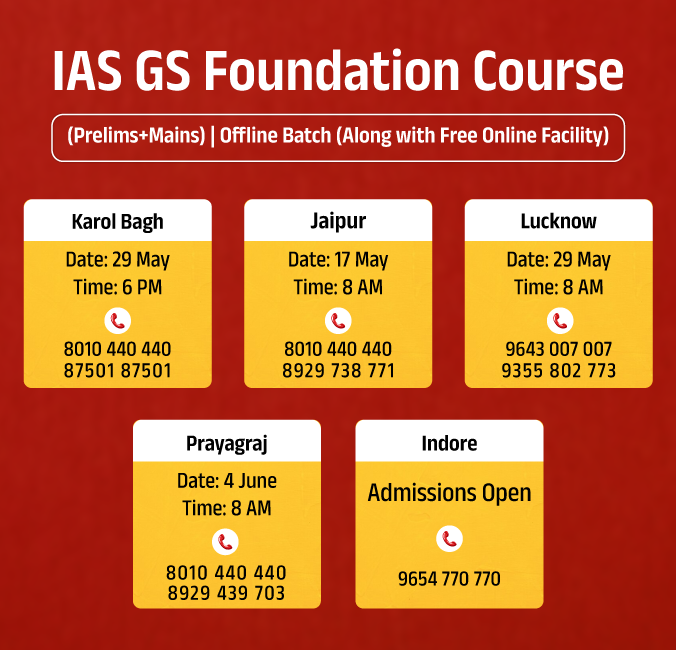
Important Facts For Prelims
Cold Lava
Why in News?
Recently, a cold lava erupted at Mt. Kanlaon Natural Park in the Philippines has sent rivers of cold lava, or “lahar”, flowing through a village miles away from the summit on the Negros Island.
What is Cold Lava?
- About:
- Cold lava, known as lahar in Indonesian, is a phenomenon where rain mixes with volcanic materials like ash, sand, and pebbles, forming a concrete-like substance.
- Lahar primarily travels along river valleys and can reach extremely high speeds of up to 75-80 kilometers per hour or even faster.
- Its flow can be either hot or cold, depending on its source and origin, and is primarily associated with stratovolcanoes.
- Stratovolcanoes are also called composite volcanoes because of their stratified layers of deposits that form the flanks of the volcano.
- Cold lava is considered more destructive and deadlier, due to its high density, abrasive nature, and ability to cause significant damage to structures and infrastructure.
- Formation:
- It can occur without volcanic eruptions, often triggered by heavy rainfall or landslides on the slopes of volcanoes covered in loose volcanic material.
- Volcanic eruptions themselves can generate lahars by melting snow and ice present on the volcano or through pyroclastic flows that mix with water.
- Eruptions often generate scorching hot clouds of gas and debris known as pyroclastic flows.
- Lake breakout floods caused by volcanic landslides can also transform into lahars as they erode and incorporate more debris and water, significantly increasing their volume and destructive potential.
What is the Difference Between Cold Lava and Normal Lava?
- Temperature Variation: Normal lava is extremely hot molten rock, while lahars are not molten and can vary greatly in temperature.
- Mixtures: Lava consists solely of molten rock, whereas lahars are a mixture of water and volcanic debris like ash, rocks, and sand.
- The composition of lahars, being a dense slurry rather than pure molten rock, allows them to flow faster and further from the volcanic source.
- Impact: Lahars can be more destructive and deadlier compared to regular lava flows because they can affect and devastate a much larger area due to their fluid, flowing nature and ability to incorporate more debris as they travel.
- This mobility and incorporation of extra material gives lahars the potential to increase massively in volume, compounding their destructive force.
Magma vs Lava
- Magma is the term used to denote the molten rocks and related materials seen inside the earth. A weaker zone of the mantle called the asthenosphere, usually is the source of magma.
- Lava is nothing but the magma above the earth's surface. Once this magma comes out to the earth's surface through the vent of a volcano, it is called the Lava.
Mud Volcano
- A mud volcano or mud dome is a landform created by the eruption of mud or slurries, water and gases.
- Mud volcanoes are not true igneous volcanoes as they do not produce lava and are not necessarily driven by magmatic activity.
- Mud volcanoes may range in size from merely 1 or 2 meters high and 1 or 2 meters wide, to 700 meters high and 10 kilometers wide.
UPSC Civil Services Examination, Previous Year Questions (PYQs)
Prelims
Q. Consider the following statements: (2018)
- The Barren Island volcano is an active volcano located in the Indian territory.
- Barren Island lies about 140 km east of Great Nicobar.
- The last time the Barren Island volcano erupted was in 1991 and it has remained inactive since then.
Which of the statements given above is/are correct?
(a) 1 only
(b) 2 and 3
(c) 3 only
(d) 1 and 3
Ans: (a)


Rapid Fire
SEBI Expands Promoter Definition for IPO Companies
The Securities and Exchange Board of India(SEBI) has expanded the promoter definition for companies tapping the market for an initial public offering.
- Under the new guidelines, founders with a combined 10% stake who are also key managerial personnel (KMP) or directors will all be considered promoters.
- Immediate relatives of the promoter on the company board or as KMP, or holding 10%+ in the company, directly or indirectly, will also be classified as promoters.
- However, once someone is part of the promoter group, it's not easy to be declassified as a public shareholder due to rule 31A of Listing Obligations and Disclosure Requirements (LODR) Regulations.
- Declassification means officially removing the status or label of being a promoter or a specific classification.
- According to current SEBI regulations, a promoter is someone who controls the affairs of the company or can appoint the majority of directors or is named as such in an offer document.
- An IPO is an initial public offering, in which shares of a private company are made available to the public for the first time.
- An IPO allows a company to raise equity capital from public investors.
Read more: Proposal for Changing Promoters to Person in Control: SEBI, SEBI


Rapid Fire
Russia Ships Equipments to Kudankulam NPP
Russia has shipped the first batch of 26 turbine hall pipeline valves (High-pressure and low-pressure gate valves) for the Kudankulam Nuclear Power Project's (KNNP) reactors 5 and 6
- Their key function is a tight shut-off of the fluid or gas flow to ensure reliable operation of the system.
- It currently has 2 x 1,000 MWe WWER reactors generating power, with 4 more reactors of similar capacity under construction.
- WWER are "Water-Water Power Reactor". These reactors use water as both the coolant and the moderator for the nuclear reactions that produce energy.
- KNNP has been modernised jointly by Russia's Rosatom and the Nuclear Power Corporation of India Limited (NPCIL). It is the largest nuclear power plant in India.
- It is India’s first nuclear plant to use imported PWR (Pressurised Water Reactor) technology.
- Its construction began in 2002 and it is expected to operate in full capacity by 2027.
- The share of nuclear power in the total electricity generation in the country was about 2.8% in the year 2022-23.


Rapid Fire
Heater Organs in Marsupials
Recent research reveals that around 100 million years ago, placental mammals developed brown fat to survive cold and spread worldwide, and this fat evolved only in modern placental mammals.
- Placentals are mammals excluding marsupials and monotremes, and they form one of the three main groups of living mammals, alongside Monotremata and Marsupialia.
- Marsupials are the group of mammals commonly thought of as pouched mammals.
- They give live birth, but they do not have long gestation times like placental mammals.
- They are quite structurally diverse and range from small four-footed forms like the marsupial mole, Notoryctes, to the large two-legged kangaroos.
- Marsupials, which diverged from placental mammals about 120-180 million years ago, possess a less developed form of brown fat.
- Brown fat/Brown adipose tissue (BAT) is an exquisitely designed tissue/organ system that has evolved for the maintenance of body temperature.
- Brown fat's ability to burn fat and sugars to produce heat has implications for treating obesity, diabetes, and other metabolic disorders.


Rapid Fire
DDT Levels on Decline, POPs on Rise
A recent study reported that since 2004, the insecticide Dichloro-diphenyl-trichloroethane (DDT) along with 11 other Persistent Organic Pollutants (POPs), has decreased significantly in both humans and the environment due to stringent global regulations.
- Other POPs and replacements for banned lethal POPs with similar properties have increased to high levels.
- POPs are organic compounds (i.e. carbon-based) that resist degradation by environmental processes such as chemical breakdown, biological processes, and sunlight. They can remain in the environment for long periods for decades and centuries.
- They can cause cancer, liver damage, reduced fertility, and higher risk of asthma and thyroid as they can disrupt the endocrine system.
- The Global Monitoring Plan for POPs has been implemented by the UN Environment Programme (UNEP) and funded by the Global Environment Facility (GEF).
- The study was conducted in 42 countries in Africa, Asia, Latin America and the Caribbean, and the Pacific Islands with limited data on POPs to monitor 30 POPs listed under the Stockholm Convention as of 2021.
- Stockholm Convention (2001) is an international environmental treaty effective from 2004 that aims to eliminate or restrict the production and use of POPs.
- DDT is the first modern synthetic insecticide developed in the 1940s which is a colourless, tasteless, and odourless compound.
- It is still used in some countries (such as South Africa, Namibia, Botswana, Zimbabwe) for malaria control under strict regulations.



